The SEC’s Portal Power: Data, Trends & Effects

Quick Snapshot
The SEC remains the top portal destination. In the 2025 cycle, 69 players have committed to an SEC school, and 45 of those players are coming from non-SEC schools, as the On3 portal wire reports.
Softball America’s 2025 Top-15 Transfer Class Rankings list Georgia (#3), Oklahoma (#4), Arkansas (#5), LSU (#6), Texas A&M (#7), Tennessee (#10), Alabama (#11), Texas (#12), Florida (#13) and Mississippi State (#14) among the strongest classes nationally, showing off the SEC's dominant use of the portal.
Since April 2024, academically eligible DI athletes get immediate eligibility, making roster upgrades seamless and athletes more inclined to bet on themselves in the portal.
Add that rule change on top of NIL's legalization in 2021, and you've opened Pandora's Box. Case in point? NiJaree Canady’s transfer to Texas Tech came with ~$1.0M in NIL for 2025 and a renewal to $1.2M for 2026, a record-setting benchmark every SEC coach must recruit against.
The Volume Picture (and why it matters to the SEC)
The 2025 On3 portal wire lists 290 softball entrants, with 248 of them committing (86%). Of those 248 commits, 45 of them came from non-SEC schools into SEC programs.

With proven starters arriving from Big Ten, Big 12, Pac-12, and mid-majors, the SEC can patch immediate needs—especially in pitching and up-the-middle defense—without waiting years for recruits to develop.
How SEC Programs Are Using the Portal
Inbound highlights (2025 cycle):
- Alabama: Added Jena Young (Iowa, Big Ten) and Brooke Wells (Houston, Big 12). Young brings proven on-base ability and defensive steadiness in the middle infield, giving Alabama depth after graduating veterans. Wells, a corner infielder with power upside, shores up the lineup’s run-producing core. Together, they represent Alabama’s strategy of targeting everyday contributors who can slot in immediately.

- LSU: Landed Paytn Monticelli, a pitcher from Oklahoma. Monticelli arrives from one of the sport’s deepest staffs, meaning she’s already accustomed to high-level competition. For LSU, adding a battle-tested arm addresses the single biggest SEC currency: circle dominance. Monticelli gives Beth Torina’s staff another option to combat the SEC gauntlet.
- Ole Miss: Secured a four-player haul that might be the league’s most aggressive portal class:
- Emilee Boyer (West Texas A&M, DII POY) brings strikeout stuff, testing whether a decorated DII star can translate dominance into the SEC.

- Kyra Aycock (Oklahoma State) offers proven Big 12 postseason experience, anchoring the rotation with composure.
- Liesl Osteen (UCLA, Pac-12) is a versatile outfielder with Pac-12 pedigree, adding athleticism and defense.
- Kennedy Bunker (Fresno State) gives the Rebels a reliable catcher with pop, helping solidify the battery.
Together, they represent a full positional spread—pitching, outfield, catching, and power hitting—illustrating how Ole Miss is using the portal as a near-complete roster makeover tool. - Georgia: Signed Hannah Davila (North Florida), a middle infielder with contact skills and defensive range. While not the flashiest pickup, Davila fills a need in Georgia’s depth chart and highlights the SEC’s ability to identify and elevate mid-major standouts.
- South Carolina: Added Sage Scarmardo (Purdue, Big Ten) and Lexie Shaver (Kent State, MAC). Both are infielders with offensive upside, underscoring the Gamecocks’ effort to retool the lineup’s versatility. These pickups show South Carolina leaning into the portal to find plug-and-play starters capable of handling SEC pitching.
The league is both a destination and a battleground. What stands out in 2025 is that the portal isn’t just about filling one gap—it’s become a way to add entire position groups. Ole Miss’s four-player class is a perfect example of using the portal to accelerate a rebuild, while Alabama and LSU have been more targeted, patching specific weaknesses with experienced, high-floor talent.
Rules = Fuel
The NCAA’s policy shift means academically eligible DI transfers can compete right away. That immediacy lowers friction and incentivizes late-cycle roster changes.
Staffs now recruit year-round—high school and portal alike—because roster upgrades can happen at any moment.
NIL Economics in Context
Ironically, it was a Big 12 program that reset the NIL market in college softball. NiJaree Canady’s transfer to Texas Tech came with a groundbreaking package—$1 million in 2025, climbing to $1.2 million in 2026—establishing that elite pitchers can command seven-figure valuations. But that move didn’t just elevate Texas Tech; it raised the standard for everyone.

For the SEC, it’s a wake-up call. The league has long benefited from bigger fan bases, national TV exposure, and mature collectives—advantages that make it a natural NIL powerhouse. But Canady’s deal proves that programs outside the SEC are now willing and able to play at the same financial level. To stay “elite,” SEC schools have to lean even harder into their resources, competing not just with each other but with ambitious challengers from other leagues.
Micro Example, Macro Lesson
Sierra Sacco’s 2023 transfer from Louisiana Tech to Mississippi State illustrates the escalator effect. Sacco had already proven herself as a contact hitter at Louisiana Tech, but the move to the SEC gave her national visibility.
At Mississippi State she became one of the SEC’s most consistent table-setters, posting an on-base percentage over .480 across her first two seasons, leading the Bulldogs in hits and runs, and showing top-end speed with double-digit steals. That production on the SEC stage elevated her profile beyond the college ranks, ultimately earning her a spot in the Athletes Unlimited Softball League.
What am I trying to show you? The portal is an escalator of opportunity for players and, seemingly, a talent funnel for SEC programs.
Risks & Realities
Let's be real, though. There's no guarantee when betting on yourself, and some players looking for more opportunity with another team or conference are left with less than they had before. Even in 2025, 14% of portal entrants remain uncommitted.
Trends show that programs that blend selective portal pickups with internal development pipelines tend to sustain success over splash-only approaches. So, athletes and coaches must BOTH weigh bets carefully.
Bottom Line
The SEC has cemented itself as college softball’s transfer epicenter. With 45 confirmed inbound transfers from non-SEC schools this cycle and ten league programs ranked in the top fifteen nationally, the SEC is shaping the market more than any other conference. In today’s game, roster building is 12 months long—and the transfer portal is the game's most reliable accelerator.




